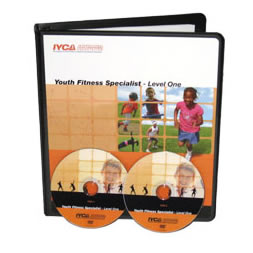
OK… Here are the definitions that were emailed to me.
What do you think?
(1) Balance
The ability to remain centered while center of gravity changes within static, dynamic, locomotive and non-locomotive action
(2) Rhythm
The ability to express timing
(3) Movement
The ability or aptitude to be locomotive through varying levels and directions
(4) Strength
The ability to express force
(5) Mobility
The ability to move within free and full ranges
(6) Tactical
The ability to demonstrate strategic or intentional action in order to produce a desired outcomes
Become a Youth Coach
‘Youth Fitness Specialists’ Are Becoming the Fastest Growing Professionals In This Entire Industry… See For Yourself:
Click Here Right Now —> https://iyca.org/yfs1



I would question the definition of strength – strength dies not necessarily have to equate to force as this would suggest an outward display when strength emanates from within mentally and physically – just an opinion
While the definitions are somewhat simple, I think if given to a parent they would grasp them.
These seem to be reasonable definitions. I am still trying to grasp the functional difference between mobility and flexibility from what I am getting from IYCA. With the balance definition, I think we need to specify the concept of being “centered.” Could we say that that refers to keeping one’s body weight under control?
I like the definition and it illustrates the broad scope of athleticism. One of my pet peaves is listening to commentators talk of being athletic only in terms of linear speed and jumping ability.
Shouldn’t the rhythm def. Include movement?
The ability to express movement with timing?, for example.
Athletic Functional Mobility- The ability to move within free and full ranges with stability and strength?
here are my thoughts:
1. Balance is the ability to control movement during static, dynamic, locomotive and non-locomotive action, 2. repeatedly express timing, 3. add “planes of motion”, 4. express or resist external forces. I understand what Mili is saying, but I think that belongs in a different discussion., 5. “Mobility is the combination of muscle flexibility, joint range of motion and a body segment’s freedom of movement.” -taken straight from the FMS manual
6. works for me
I appreciated the definitions, except I would add that if you are referring only to the physical portion it is a good start. I see all the words to be used in conjunction with your mind, will, emotions, and body (total unity). Some would advocate: Spirit
Soul
Body
To me the definitions above sound more like NSCA speak then IYCA. How about definitions that make sense to kids?
Balance-Ability to maintain physical control of your body so that you don’t fall down when playing.
Rhythm-Ability to move multiple parts of your body sequentially or at the same time in a chosen pattern.
Movement-Ability to move your body through space in all directions.
Strength-Can be physical or mental. Physical-the ability to control your body in space. Mental-the ability to discipline yourself. Focus.
Mobility-The ability to move your body through space with ease but also to stop, change directions and get up when you fall.
Tactical-The ability to move your body through space in whatever way necessary to win your game.
Proprioception needs to be included in this list especially for the young kids. Or is this implied?
hi
the following extracts contains some of the key features of performance we are using in our coaching sessions.
Hope it helps
take care
eric
Aims of session
Balance Movement
Coordination Anticipation
Agility Reaction time
Group awareness Body awareness
Spatial awareness Decision making
Tracking Accuracy
Rhythm Control
Timing Body awareness
Key Features of Performance
Concentration: The ability of the mind to stay focused
Balance – the ability to control the body’s position
Agility – the ability to perform a series of explosive power movements in rapid succession in opposing directions (Zigzag running or cutting movements)
Group awareness: the ability to be aware of the other players
Spatial awareness: awareness of the position our body occupies in space
Tracking: the ability to follow an object through space (and hopefully predict it’s path)
Rhythm refers to the overall cadence of your game as you move from shot to shot.
Timing in a game refers to the actual steps you take in execution of the shot
Body awareness: awareness of the all body and the relationship to it’s parts
movement:
Co-ordination – the ability to integrate the above listed components so that effective movements are achieved.
Anticipation: Ability to read the game or predict opponents next move
reaction time: the time it takes for the body to react to a stimulus
Motor Fitness refers to the ability of an athlete to perform successfully at their sport. The components of motor fitness are: Agility, Balance, Co-ordination, Power and Reaction Time